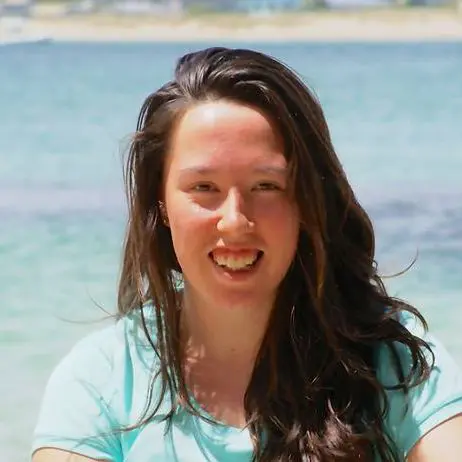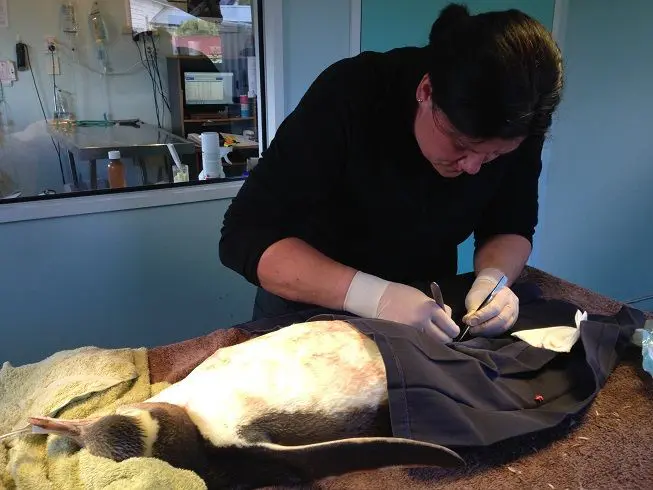Over the last few days we have had a run-in with various sick yellow-eyed penguins (YEPs).
We picked up a sick yellow-eyed penguin that had been collected the previous day. We assessed the bird at the Owaka DOC Base – he was emaciated, and Lisa identified the need for the bird to have surgery due to injuries to his left hock of his foot.
From there Lisa and Mel organised for the bird to be transported to the vet in Dunedin, where it would be put on antibiotics and cleaned up temporarily while a flight was organised so the bird could travel up to Massey University in Palmerston North. At Massey the bird would receive its surgery and be brought up to a healthy weight to be returned back down South.
It was incredible to hear about the partnership between DOC and Air NZ. This partnership allows not only yellow-eyed penguins, but other endangered species (other birds, reptiles, and invertebrates) to be able to be transported around the country with the utmost care – under the Threatened Species Translocation programme. These animals move around the country to receive medical care, and to be transported to safer or new breeding sites. Mel mentioned that flights are well organised so that the animals are not waiting around too long at the airports which is really encouraging. This programme has allowed the transport of approximately 10 YEPs in 2014, and now our first for 2015. While it isn’t the best news that the penguins require medical attention – the fact that the opportunity to help them is so accessible is such an asset for conservation. As an update, this particular bird made it safe and sound up to Massey and is doing well up there.
(Attached gopro photo is of the penguin above)
Subtitle: To follow on from Dannie’s previous blog…
The morning following the emergency penguin rescue as mentioned in Dannie’s blog – Lisa and I made the trip up to St Kilda Vets to perform surgery on the critical-condition penguin.
The penguin, as Dannie mentioned, had severe foot injuries – with a severed tendon on one foot, and a toe needing amputation on the other foot. Lisa was confident that as these were fresh injuries, she could perform surgery on the bird – however, she needed assistance. That’s where I came in. I was to monitor breathing, heartbeat, anaesthesia, and administer fluids throughout the surgery whilst Lisa was sterile and repaired the tendon and amputated the toe.
Subtitle: Surgery:
We put the mask onto the bird, and started to put the bird to sleep. We inserted an endotracheal (ET) tube into the bird so it received gas and oxygen throughout the surgery, whilst every two minutes I checked for a consistent heartbeat, proper breathing, and signs of regurgitation. I had to breathe for the bird pumping manually if the breaths were too shallow, and constantly keep Lisa up to date. Every five minutes we would insert fluids into the bird through an IV catheter to replace the blood loss from surgery. In all honesty – I was nervous. This was my first experience in a veterinary surgery, where I was responsible for keeping this bird alive. However, I knew that I was here to help Lisa and ultimately help this penguin, and I needed to keep calm and attentive.
The penguin had to have intensive surgery – Lisa skilfully manoeuvred her way around a clinic she was not familiar with, and re-attached the tendon on the first foot. This is a difficult task and painful for the bird as it is near the bone, hence needing relatively deep anaesthesia. We moved onto the next foot, where I cleaned out the sand from her toe wound, and Lisa amputated the toe. Both surgical procedures went according to plan and we began the process of bandaging and waking the bird up. Upon final steps of waking her up – the anaesthesia machine was off, her ET tube was out, and we were gently rocking her as she was becoming conscious – her breathing and heartbeat stopped. We started CPR and holding her up to clear her airway – however she had lost too much blood from her original injuries and during the surgery.
As my first experience with being responsible for an animal under anaesthesia, I can say it was quite hard for me to have gotten through the surgery, having ensured the penguin was stable, and having her die upon waking up. Unfortunately, that is how procedures can go sometimes and Lisa was very professional in handling the situation.
Ultimately this is a good example of why conservation efforts are important. DOC strive to band or microchip every possible adult yellow-eyed penguins that they can. The female breeder penguin that did not make it through the surgery is an example of why this effort is necessary. Regardless of whether we had taken her out of the wild or not, it is likely that this penguin would have died from infection. We now know a breeder has died but we do not know the location of her nest, meaning that we will not be able to go in and monitor or rescue her chicks. It is therefore important to continue this work of nest searching, tagging, and monitoring so that we can ID individual penguins and monitor or save their offspring.
The St Kilda Vet Centre were great to accommodate us. Upon leaving, we mentioned the hope that we wouldn’t have to see them again very soon. Not fifteen minutes down the road, we received a phone call from Mel, saying that Johanna, Dannie, and herself had rescued a pair of adult penguins with bad barracuda injuries again, along with their two chicks. Back to the vets we would go in the morning, hopefully with better fortune.
From the day’s events, I feel very invested in both the individual birds that we meet and treat, as well as the population and species itself. So much hard work is done by both organisations, DOC and the Yellow-Eyed Penguin Trust as a whole, but also individuals such as Mel and Lisa who go out of their way for the conservation of these birds. As one of the rarest penguin species in the world, these birds deserve this effort, as they are charismatic, an important part of community and ecosystem structure, and also provide charm and value to the Otago area.

Samantha Collings
BLAKE DOC Ambassador 2014


